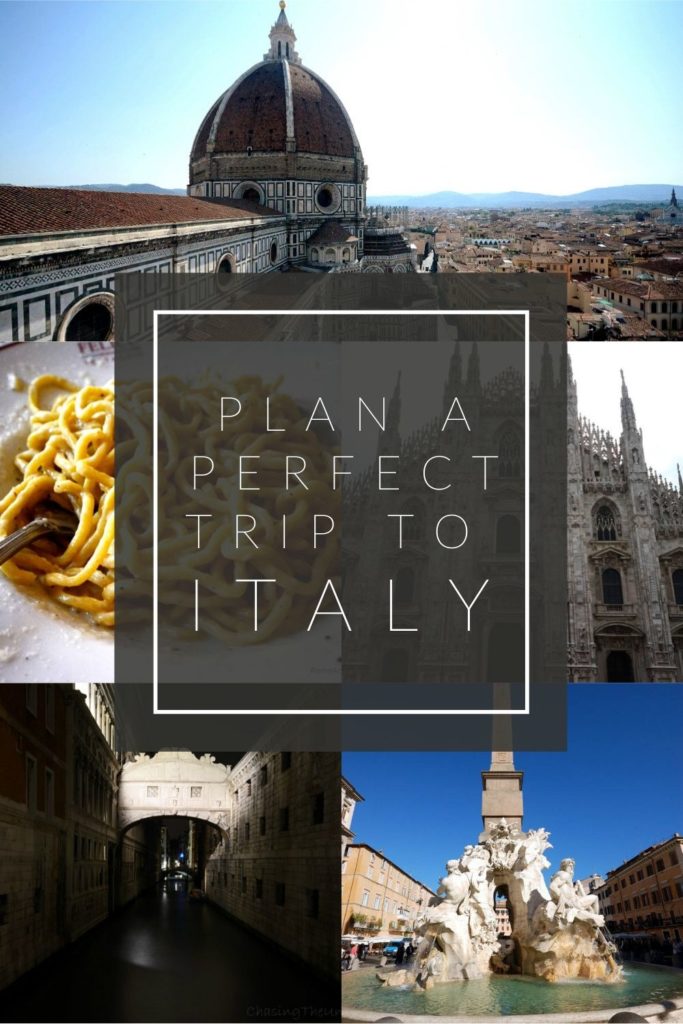Are you planning a trip to Italy and don’t know where to start? We’ve made a list of the most essential tips on how to plan a trip to Italy with both a foreign (my husband) and a local’s (myself) insight.
We touched on the most important details you shouldn’t neglect in your Italy trip planner and gave you the necessary tools to plan your holiday on your own.
Even though Italy is a very popular travel destination, proper trip planning is necessary to avoid unwanted surprises. Do you need a visa to travel to Italy? Do you have a favorite type of accommodation? When is the best time to visit Italy and where would you like to go?
We are going to give you handy tips on how to say basic sentences in Italian, we will give you some itinerary-planning suggestions, and even list some of the most popular food stores in Italy where to buy your groceries if you are renting an apartment.
From getting around to deciding where to stay and what to pack, here is all you need to plan a perfect trip to Italy. For more detailed information about the cost breakdown, how to get to Italy, how to get around with local public transport, and important numbers to know in case of emergency, check out our complete Italy travel guide.
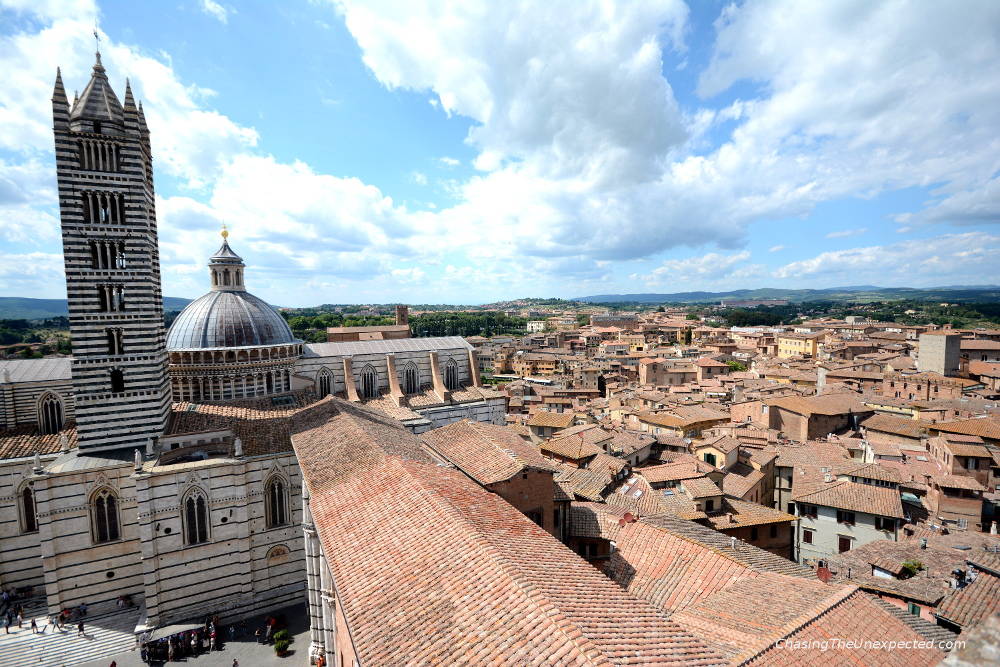
How many days in Italy is enough?
The ideal amount of time to set when you planning a trip to Italy is 2 weeks. If you are visiting for the first time, two weeks is a perfect time to explore the most famous cities and also include some day trips.
If you have already seen the biggest tourist draws and want to go offbeat, 2 weeks still is an ideal time to set for Italy. Alternatively, you can also opt for 10 days in Italy and stick to the most famous destinations and mainly big cities to reach by train.
What is the best way to plan a trip to Italy?
The best way to plan a trip to Italy is to make a list with all the necessary steps ahead of time. While things like packing can be done right before leaving, other things need to be planned in advance. This is what you need to plan and book ahead when organizing your Italy vacation.
- International flights. This is especially necessary if you have fixed holidays and can’t play too much with the dates.
- Travel documents. You need to make sure your passport has 6 months of validity and you need to check your visa requirements in advance.
- Hotels. Especially in the high seasons and in smaller towns with limited options.
- Tours and tickets. Even if you don’t want to book a private tour, purchasing a skip-the-line ticket to crowded attractions will save you plenty of time.
- Restaurants. It’s better to book your table ahead on important days like Christmas for lunch and dinner, New Year’s Eve “cenone” dinner, or lunch on Easter Sunday because many Italians go to eat out and restaurants are very crowded.
- Domestic travel. Whether you are taking a domestic flight, a train, or an extra-urban bus, I highly recommend booking your tickets early to avoid finding all sold out.
- Itinerary planning. This is pretty much one of the very first things to plan so that you know which flights or trains to book, where you will need a hotel, and what landmarks you will want to visit.
How to plan a trip to Italy – All you need to know step-by-step
Research the best time to travel to Italy
When planning a trip to Italy, the first thing you should consider is when it’s the best time to travel also depending on when your holidays are. Every season is a good time to visit Italy.
Do you want to enjoy the beach? How about Sardinia, Sicily, or Puglia in the summer?
July and August are hot and very crowded, but if you can make it in June before the mass tourism starts or September after the crowds are gone, you will love it. If you are planning your trip in the summer, keep in mind that you will find quite a few mosquitoes in many regions of Italy.

If you are a practicing Catholic or love ancient history, then Rome is your ideal destination. If you are a Renaissance art lover, you can’t miss Florence, while if you are hiking and skiing passionate, you will certainly enjoy Trentino Alto Adige’s Dolomites in both summer and winter.
Even though winter is cold (and in northern Italy very cold), this is a great season if you are a ski lover, or even to visit more southern regions where the weather is definitely milder. If you want to celebrate and experience the Christmas vibe, December in Italy is a magical time. To attend some Carnival parties, you should travel to Italy in February.
Weather-wise, spring and fall are probably the best seasons to plan a trip to Italy. In spring, flowers are blossoming, the colors are bright and the scents are intoxicating. Plus, the weather is lovely and even if sometimes it does rain, it makes for a very pleasant walk. Both March and April are great months to visit Italy. April is usually when we celebrate Easter in Italy and big cities can get very crowded.
Autumn is a good season because it’s not too hot anymore and not cold yet, so easy to walk around. During fall, too, it can rain, but the colors of the falling leaves and day and evening lights are very romantic.

Check if you need a visa
When planning a trip to Italy, check out the visa requirements. Several nationalities can get an Italian visa on arrival, while others need to apply in their home country for an Italy/Schengen visa. If you were granted a Schengen visa and you enter the area from another EU country, you can then travel to Italy, too.
The conditions to be granted a visa to Italy go from the type of visa you are applying for, the duration of your stay and your nationality. Nationalities like the US, Brazil, Argentina, Israel, UAE, Australia, New Zealand, Singapore, and Japan don’t need to apply for a visa for up to 90 days’ stay. They only need to show their passport with at least 3 months’ validity to the border police at the airport.
To make sure if you need to apply for a visa and what documents are required, answer a couple of questions on the Foreign Ministry’s official website and you will get all the information you need.
Find the best flights to Italy
There are several websites where you can check for the best flight deals to Italy. The portal I normally use is Skyscanner because it compares different airlines and other comparison websites, so you will have a broader view.
You can also check the prices and promotions in different Italian cities, so depending on where it’s more convenient, you can start planning your Italy itinerary. On top of that, Skyscanner allows you to receive price alerts for the flights you are looking for directly in your email.
Alternatively, you can check the single airline websites such as ITA, Delta, American Airlines, British Airways, Lufthansa, Iberia, Tap, and many others that land in Italy. Some of the low-cost you can take from other European countries are EasyJet, Ryanair, and WizzAir.
I found that they are actually low-cost when you travel only with small hand luggage. But if you start adding checked-in luggage and services, their fares are not much different from the ordinary airlines. Whichever airline you are booking your ticket with, make sure you check the TSA liquid rules.
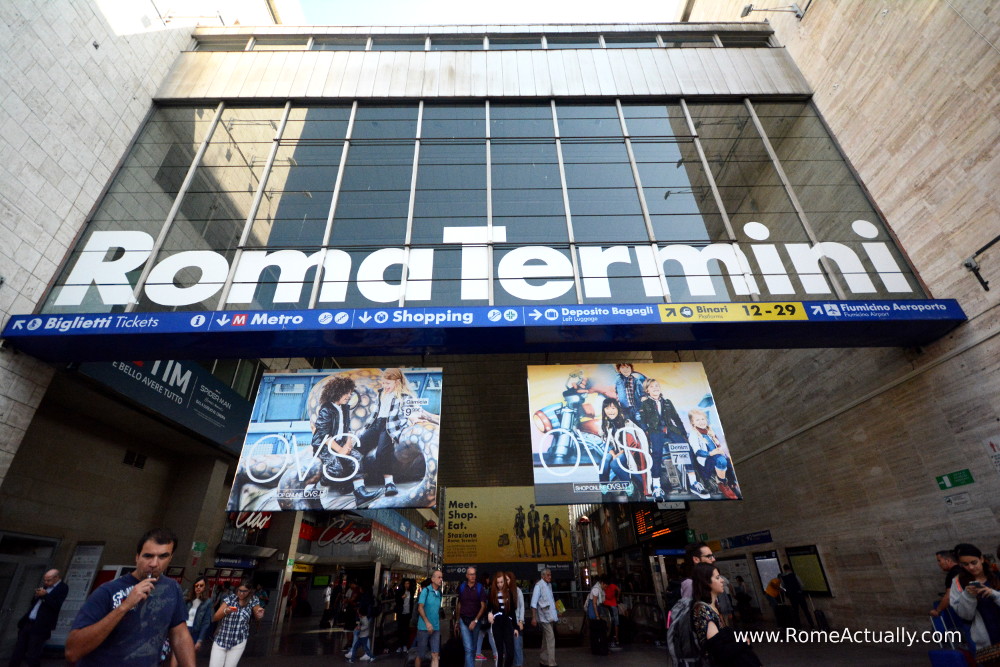
How to get around Italy – Using extra-urban public transport
Italy has a great and very widespread railway system, so if you are traveling independently, you can totally rely on Trenitalia or Italo Treno. After each major city, I mentioned the transport you can book to get to your next stop but the Italy railway is great for reaching also smaller towns and even tiny villages. The perfect way of traveling around Italy for two weeks.
So if you are in Rome and want to visit nearby towns like Bracciano or Viterbo, you can easily take the train, or reach the towns of Terni, Perugia, Orvieto. Or even if you are in Sardinia, the railway really reaches improbable tiny villages.
For train routes, prices and connections, you can check the websites of Trenitalia, Italo Treno, and Omio (formerly GoEuro).
If you are visiting cities and towns within the railway network, you are covered. But if you are planning on getting off the train route, relying solely on the buses might not be as straightforward. In this case, I suggest renting a car, a great option for an Italy road trip.
Decide when to rent a car in Italy
If you want to visit also other places without sticking only to the major cities, the easiest and best way to travel in Italy is by renting a car. For example, if it’s not your first trip to Italy and you want to go off the beaten path to explore some gorgeous and famous countryside, your own car becomes essential.
For example, in Sardinia, you totally need to rent a car. The trains get you only this far, stopping mainly in Cagliari, Oristano, Sassari and Olbia, several smaller villages but most of the archaeological sites, as well as the beaches, are impossible to reach with public transport. There are some buses but very few.
The same goes for regions like Umbria and Tuscany. They boast fantastic countryside, but you will need a car to get there. In general, southern and central Italy requires a car, while in the north you will have a more widespread public service. Even though in mountain areas solely relying on the buses will prevent you from seeing many places and you won’t be free to manage your time.
Please note that in order to drive in Italy, you need an international license that you can get in your home country.
Click here to see prices, cars, and deals.

Decide what to pack, essential when planning a trip to Italy
You can decide what to pack for Italy when you know in which season you are taking your trip. For example, since Spring is a very popular season, what to wear in Italy in May? While the weather is lovely this time of the year, it can sometimes be tricky as temperatures change all of a sudden.
My advice would be to wear different layers so that you can cover quickly if you stay out all day until evening when it’s usually colder. So if you are planning a 2-week trip to Italy in Spring, make sure you pack some pretty flexible clothes and are ready for the warm and crisp weather.
On the other hand, what to wear in Italy in September? The beginning of the Fall in Italy is pretty nice as the summer heat is mostly gone and the winter cold has not arrived yet. Mostly, you can wear summer clothes with a jacket, a light jumper, and a light scarf for the evening. You might find some showers, too, so make sure you pack an umbrella. Better if small so you can carry it around easily.
If you are wondering what to pack for Italy for the winter, it’s pretty straightforward: definitely warm clothes, a jacket, a coat, warm trousers, socks, and everything you are comfortable with. Quite straightforward is also packing for a summer Italy trip: shorts, T-shirts, sandals or summer runners, and obviously a bikini if you are going to the beach!
Avoid annoying online surcharges and nasty surprises by weighing your suitcase with one of the best digital luggage scales.
Sadly, on public transport in Rome, you need to be careful about the pickpockets as it’s still a problem both on the buses and on the metro. This is why, for your peace of mind, you can buy anti-theft clothes. Clever Travel Companion has a great choice of models, colors, and clothes such as scarves, boxers, leggings, tops, t-shirts, women’s underpants and more.
Click here to check models and prices.

Tailor your own Italy itinerary
A major point of your Italy trip planner will be designing the perfect itinerary. This depends on many factors, if it’s your first time in Italy and you want to visit the most popular landmarks, whether you prefer the beach or the mountain, or maybe relaxing on a quiet hill surrounded by nature and silence. And obviously how much time you have, if you are staying two, three weeks, or ten days in Italy.
Here are some examples of itineraries:
- Two-week classic itinerary. Perfect for those who are planning their first trip to Italy and want to see classics like Rome, Florence, and Venice. Check out our classic Italy itinerary suggestions where we include also Cinque Terre and Naples plus some other detours if you have more than 2 weeks.
Check out our tailored Rome itineraries and travel services!
- Italian islands. This is great if you have been to Italy already and want to go a bit off the beaten path. You can visit Sardinia and Sicily, and enjoy fantastic food and beautiful landscapes. Sardinia is wilder and home to countless archaeological sites. In Sicily, you can explore its Greek past in places like Valle dei Templi near Agrigento, beautiful Baroque and Norman cities like Catania, or the wonderful capital, Palermo, known as Italy’s most “Arab”. If it’s summertime, both islands will spoil you wonderfully with their beaches. Check out our guide to the most beautiful beaches in Sardinia.
- Northern Italy itinerary. Are you a sport, mountain, and adrenaline junkie? Then northern Italy is for you. Go hiking, trekking, climbing, and skiing in the Italian Alps and the Dolomites and be surrounded by breathtaking landscapes, wild nature, and wonderful snow-capped peaks. Do you prefer to explore the northern historical cities? Head to the beautiful Turin, Milan, Trento, Venice, Verona, Bolzano, or smaller towns like Merano and Bressanone.
- Southern Italy itinerary. The south of Italy will make for a different type of adventure but by no means less exciting. Regions like Puglia, Calabria, Basilicata and Campania are rich in culture, traditions, and great food. Some of the places not to miss in the south are Naples and Caserta in Campania, Bari, Lecce, Alberobello and Ostuni in Puglia, Matera, Maratea and Craco in Basilicata, Reggio Calabria, Tropea and Scilla in Calabria. If you are left with some days, the step from Calabria to Sicily is pretty short!
- Central Italy countryside. This trip is all about relaxing and enjoying the nature of the Apennine soft rolling hills. Regions like Abruzzo, Umbria, Tuscany, Lazio, and Marche are fantastic either if it’s not your first time in Italy and you want to discover some more offbeat places or if you are taking a holiday to just unplug from everything. If that’s the case, there is no better accommodation solution than an agriturismo. These are usually farms where the owners turn part of it into bungalows or rooms and the food is mainly produced in-house. You can find luxury agriturismi (plural) or more simple ones, so you can choose depending on your budget. For this type of experience, you will definitely need to rent a car.
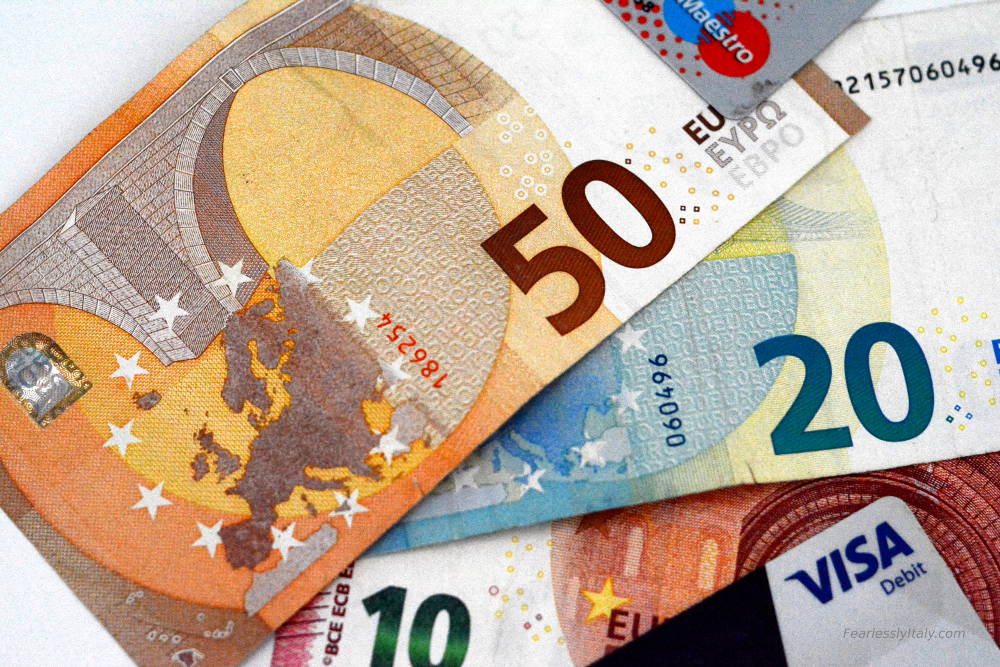
Set your budget: average cost of a trip to Italy
As far as your trip to Italy costs go, much depends on where you are going. Rome will be more expensive than smaller villages in Sardinia for example, Tuscany is more expensive than Umbria, with Venice probably being the most expensive destination in your Italy trip planner.
Some of the costs you will have to face in Italy are:
- Accommodation. In cities like Rome and Florence, you will likely spend more on your accommodation, especially if you want to stay close to the city center, where a budget hotel can be some 80/100 euros per night. An agriturismo can charge you from 140 to 200 for two nights, while a hotel in a smaller town can cost as low as 40 euros per night.
- Food. Eating out in Italy is not that expensive. Even in places like Rome, Florence and Turin, you can find great restaurants with pretty affordable fares. Food-wise too, among the cities, Venice is likely to be the most expensive. In some restaurants, you will spend some 15/20 euros, wine included. Smaller towns and villages will be even cheaper and some lunches can cost you as little as 10 euros per person or even less if you are eating street food or in local markets.
- Transport. The public transport in Italy is not too expensive and in big cities, you can either purchase a tourist pass that includes transport or a daily/weekly ticket, depending on how long you are staying in a destination, which will save you a lot instead of using a single ticket every time. For extra-urban trips, traveling by train in Italy is your best bet. If you book in advance, you can find some pretty cheap fares, like 26 euros Milan-Rome. If you book the day before the high-speed trains Freccia Rossa or Frecciargento, expect to pay more, even 80/90 euros. The regional trains are usually slower as they stop at every station and are cheaper. Taxis are pretty expensive, including the taxis in Rome, so wherever you can, do use public transport. You can even check the fees of Uber in Italy if it’s more convenient.
- Landmarks. These vary a lot depending on the place and attraction. Usually, when there are city cards or passes, it’s convenient to buy them. First of all, you will have free access to some attractions and discounts on others. Secondly, often also public transport is included, so you’ll be saving money and time as you won’t have to look for a seller or newsagent every time you run out of tickets.
- Groceries. If you are renting an apartment and want to have some meals in the house, you will likely go grocery shopping. I suggest farmers’ markets for fresh fruits and veggies if you have any nearby, or stores like Conad/Leclerc, Carrefour, Esselunga and Pam. Some of the discount/cheap food chains are Lidl, Aldi (not very common yet), In’s, Todis, Tuodì, Eurospin, MD. One of my favorite store chains is NaturaSì as all their products are organic, even though it’s pretty expensive.

Find the right accommodation in Italy
One of the first things to consider when planning a trip to Italy is to book your ideal accommodation. If you are in a place for the first time, you might want to stay downtown close to the main attractions. If you’ve been already and are more confident in the area, you can look for more affordable accommodation, not in the city center.
When you are in a major city, you have a wider choice of hotels and also public transport to stay connected with the different areas. In smaller towns, usually, prices are lower, so staying in the city center can be easier.
There are several websites where you can compare hotel prices, check out guests’ reviews and search for several options before booking. To read users’ reviews and feedback, I use TripAdvisor.
However, when I want to book, I always use Booking and so far they never let me down. I find them reliable and accommodation options safe. Obviously, before booking, also here I check former guests’ reviews and never book those without reviews.
READ MORE: Check out our extensive guide to the best neighborhoods to stay in Rome.
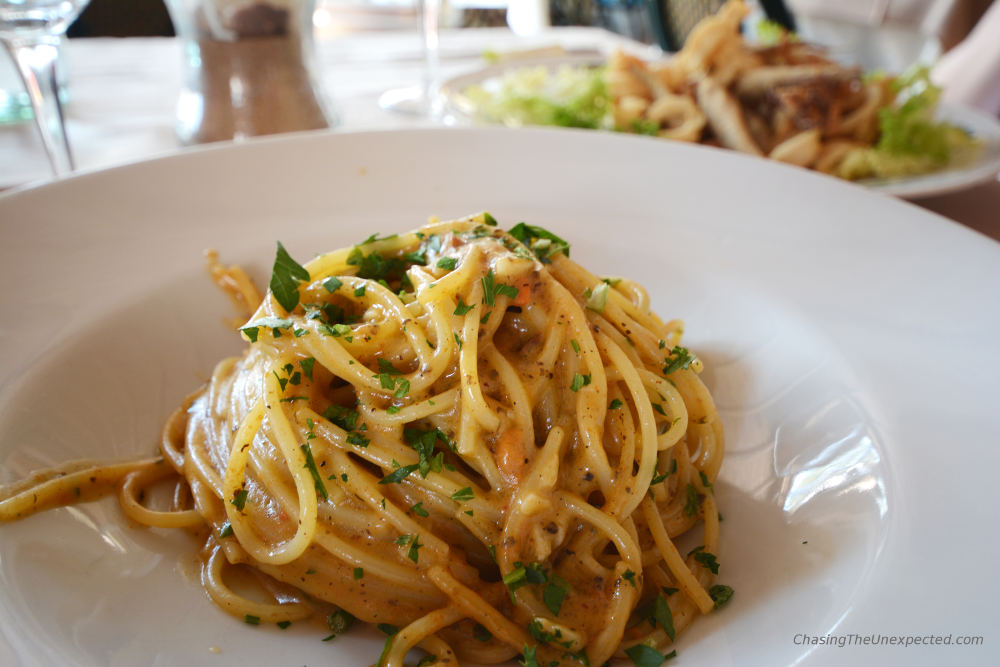
Book your tours and tickets ahead
Booking your guided tours and entrance tickets ahead is necessary if you are visiting crowded attractions such as the Colosseum and the Vatican Museums in Rome, or Santa Maria del Fiore complex and the Uffizi in Florence, all among the most famous Italian museums.
This is especially true in the highest seasons, so from April through the summer and then again around Christmas.
Websites like Get Your Guide and Civitatis allow you to book both tours and skip-the-line tickets, while companies like Walks, Devour Tours, and Eating Europe offer guided tours, which usually come with fast-track entrances to the main attractions so you skip the queue anyway.
If you are looking for semi-private or private experiences, LivTours runs very exclusive tours across Italy.
Find where to eat
As Italian food is famous the world over and one of the reasons many tourists travel to Italy, I suggest you try traditional dishes and authentic restaurants instead of tourist traps and foreign fast-foods like McDonald’s, Burger King or KFC.
Every region in Italy has its own specialties and dishes, so I totally recommend you try some authentic recipes and local produce. For example, if you are in Rome, some of the famous dishes are bucatini amatriciana, spaghetti carbonara, tonnarelli cacio e pepe if you are vegetarian, or coda alla vaccinara oxtail.
In Sardinia, Sicily and Puglia, you might want to try some seafood dishes, while in the Liguria region they make delicious pesto pasta. If you are in Naples, I suggest you don’t miss their pizza, and in Turin, you might want to try their garlic-rich Bagna Cauda and Vitel Tonné veal dish.
As a general rule, I suggest you don’t stick to the restaurants right in front of the tourist landmark as they often offer “tourist meals”. Go a bit further and ask the locals, even your hotel reception, for a better address.
Check out the dos and don’ts of eating in Italy
Where to find WiFi and Sim Card in Italy
One of the things that can make your Italy trip cost soar is the phone and internet. While in Italy, I suggest you use a local Sim Card. You can buy a pre-paid Sim from any of the providers and top it up on the go.
Vodafone is the company with wider coverage, maybe a tad more expensive than others, but not too much. And certainly not enough to prefer others with little coverage, especially if you are going to the countryside or more offbeat areas.
Tim is the main network provider, so it does have decent coverage but is a little expensive. Wind and Tre are probably the cheapest options but their coverage is good mainly in the big cities and decreases sensibly in other areas. At least this has been my experience some time ago because since I switched to Vodafone years ago, I never looked back.
You can just pop in any of their stores and they will give you all the plan and price info.
Learn some Italian phrases
In the major cities and close to tourist landmarks, you will find most people able to speak English. But if you stray off the city center or you head to offbeat destinations, you might want to learn some Italian phrases to get by at least in the most basic situations like ordering food in the restaurant or asking for directions.
Some of the Italian words and expressions you might want to learn are:
- Buongiorno – Good morning
- Buonasera – Good evening
- Buonanotte – Goodnight
- Arrivederci – Goodbye
- Grazie – Thank you
- Sì/No – Yes/No
- Quanto costa? – How much is it?
- Come stai? (informal)/Come sta? (formal) – How are you?
- Scusa/scusi/mi dispiace – I’m sorry
- Non lo so – I don’t know
- Permesso – Excuse me
- Colazione – Breakfast
- Pranzo – Lunch
- Cena – Dinner
- Sono vegetariano/vegano – I’m vegetarian/vegan
- Sono intollerante al glutine – I’m gluten-intolerant
- Sono allergico a X – I’m allergic to [whatever ingredient/food]
- Posso avere il menu per favore? – Can I have the menu, please?
- Posso avere il conto per favore? – Can I have the bill, please?
- Posso avere un bicchiere d’acqua per favore? – Can I have a glass of water, please?
- Dov’è il bagno? – Where is the toilet?
- Che strada devo prendere per raggiungere X? – How do I get to X?
- Dritto – Straight
- Destra – Right
- Sinistra – Left
- Dov’è il rifornitore di benzina più vicino? – Where is the closest petrol station?
- Dov’è la stazione ferroviaria/dei treni? – Where is the train station?
- Dov’è la stazione degli autobus? – Where is the bus station?
- Questo treno/autobus ferma a X? – Does this train/bus stop at [your destination]?
- Biglietto – Ticket
- Bancomat – ATM
- Polizia/Carabinieri – Police
- Parla inglese? – Can you speak English?
- Mi può aiutare per favore? – Can you help me, please?
Even though smartphones have made things easier, it would be useful to carry with you a small dictionary or glossary in case of need. Some examples are the Lonely Planet Italian Phrasebook and Dictionary or DK Eyewitness Travel Phrase Book.
Do you need more tips to learn Italian? Check out our guides:
- The days of the week in Italian
- Gelato flavors in Italian
- The colors in Italian
- Pizza toppings in Italian
- Hello in Italian
- Goodbye in Italian
- Shoes in Italian
- How to order food in Italian restaurants
- Foods and drinks in Italian
- House wine in Italian
Look for the best guidebooks for planning a trip to Italy
Here, too, while you can find a lot of information online, including this blog with many articles about Italy, travel tips, and travel guides, you can also carry a hard copy guidebook.
Some of the most popular guidebooks are Lonely Planet, Fodor’s, Frommer’s, DK and Rick Steves.
If you are traveling to Rome and spending some time there, you might want to check out our website entirely focused on the Italian capital, Rome Actually, and our Tasting Rome By Neighborhood food book where we suggest where to eat and what to see in five of Rome’s most exciting neighborhoods.

Peruse the best Italy tour packages
If you don’t feel like planning a trip to Italy and want to enjoy your holiday as relaxed as possible delegating all the logistics to an expert tour guide, a full Italy tour package is your best bet.
Whether you are looking for a one-week Italy itinerary, a 10-day Italy vacation package for two, or for the whole family, many companies offer them.
G Adventures’ Ultimate Italy Tour takes you to the most popular destinations going beyond the Rome Florence Venice itinerary and visiting also the Cinque Terre, Lake Como and Montepulciano in the Tuscany countryside.
Click here for more details and rates
Their Highlights of Italy Tour is shorter and in a week you will see the most important places and their main landmarks such as The Last Supper in Milan, the Pantheon in Rome, and the Leaning Tower in Pisa, among others.
Click here for more details and rates
If one of the main reasons that brought you to Italy is food, then you might enjoy one of the day tours organized by Eating Italy Food Tours that alongside introducing you to the diversity of Italian cuisine, is a great opportunity to tuck into local delicacies in the best eateries, from exclusive deli stores to popular restaurants.
Click here for more details and rates
SAVE IT FOR LATER? PIN IT TO YOUR BOARD!
